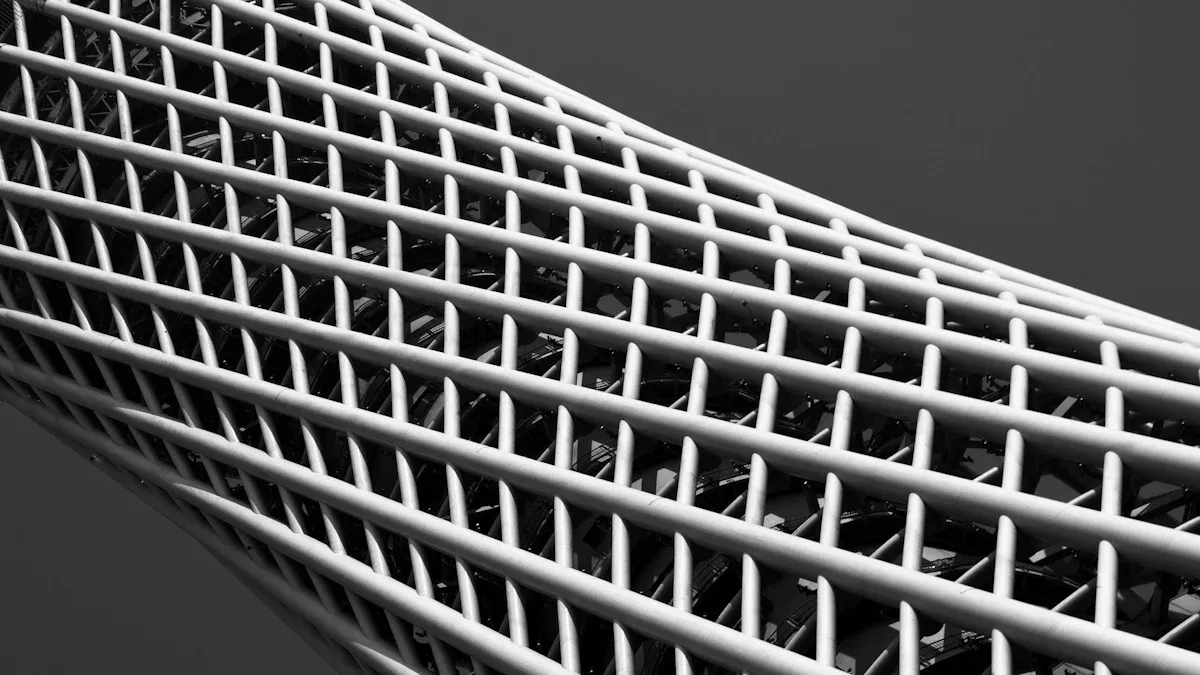Everything You Need to Know About Nitinol Tubing for Stents

Nitinol tubing plays a vital role in cardiovascular stents, offering unmatched performance due to its unique properties. Nitinol, a nickel-titanium alloy, is known for its shape memory and superelasticity, which allow stents to adapt to the dynamic environment of blood vessels. These characteristics ensure that stents maintain their structure and function under varying conditions.
The demand for Nitinol tubing continues to grow. The global market is projected to reach $2.5 billion by 2033, up from $1.2 billion in 2024. This growth highlights its increasing adoption in Nitinol Tubing for cardiovascular stent manufacturing, driven by its superior biocompatibility and durability.
Key Takeaways
Nitinol tubing is important for stents because it has special traits. It can remember shapes and stretch easily, helping stents fit blood vessels.
More people want Nitinol tubing because it is safe and strong. This makes it a top choice for making stents.
Changing Nitinol tubing sizes and features improves how stents work. This helps meet different medical needs.
Careful checks and following rules are key when making Nitinol tubing. This keeps it safe and reliable for medical use.
New Nitinol technology and eco-friendly methods are improving stents. These changes help patients and protect the environment.
What is Nitinol?
Composition and structure
Nitinol is a nickel-titanium alloy known for its remarkable molecular structure and properties. Its composition typically includes approximately 55% nickel and 45% titanium, with minor variations depending on the application. The alloy’s unique properties of nitinol arise from its crystalline structure, which undergoes phase transformations between martensite and austenite. These transformations are temperature-dependent and form the basis of its shape memory capability.
Manufacturing techniques play a critical role in optimizing nitinol’s performance. Vacuum induction melting and vacuum arc remelting ensure precise control of oxygen and carbon content, which prevents the formation of titanium oxides and carbides that could compromise durability. Thermomechanical processing, including cold working and heat treatment, further enhances its strength and flexibility.
Property | Description |
|---|---|
Shape Memory Effect | Recovers its original shape when heated above its transformation temperature. |
Superelasticity | Returns to its original shape after deformation without permanent damage. |
Non-toxic and well-tolerated by the human body. | |
Corrosion Resistance | Resists corrosion, enhancing longevity in medical and industrial applications. |
Shape memory and superelasticity
The shape memory capability of nitinol allows it to return to its original shape after deformation when exposed to heat. This property is particularly useful in cardiovascular stents, which must adapt to the dynamic environment of blood vessels. Superelasticity of nitinol enables it to recover from significant deformations without permanent damage, making it ideal for applications requiring flexibility and resilience.
Tests such as the Differential Scanning Calorimeter (DSC) and Bend Free Recovery (BFR) are used to measure transformation temperatures and shape recovery capabilities. These tests follow ASTM standards, ensuring consistency and reliability in nitinol tubing production. Tensile testing further evaluates its strength, confirming its ability to withstand high stress and deformation.
Comparison with other stent materials
Nitinol stands out among stent materials due to its combination of shape memory capability, superelasticity, biocompatibility, and corrosion resistance. Unlike stainless steel or cobalt-chromium alloys, nitinol offers superior flexibility and adaptability, which are crucial for stent performance. Comparative studies show that nitinol stents, such as the Supera interwoven stent, exhibit lower rates of target vessel revascularization and limb revascularization compared to bare nitinol stents.
These advantages make nitinol the preferred choice for cardiovascular stents, where durability and adaptability are essential. Its ability to maintain structural integrity under dynamic conditions ensures long-term reliability, reducing the need for repeat interventions.
Why Nitinol is Ideal for Cardiovascular Stents

Biocompatibility and corrosion resistance
The biocompatibility of nitinol makes it an excellent choice for cardiovascular stents. This material is well-tolerated by the human body, reducing the risk of inflammation and rejection. Its corrosion resistance ensures long-term durability, even in the harsh environment of blood vessels. Clinical studies validate these properties. For example, nitinol stents exhibit a polarization potential of 800 mV without pitting initiation. Additionally, the nickel elution rate remains below 1.1 ng/device/day on the first day and drops to less than 0.1 ng/device/day after seven days. These values are significantly lower than systemic toxicity levels, ensuring safety for long-term use.
Nitinol's unique properties also minimize adverse reactions. Its ability to resist corrosion prevents structural degradation, maintaining the stent's integrity over time. This combination of biocompatibility and corrosion resistance makes nitinol tubing a reliable material for stents and stent delivery systems.
Flexibility and adaptability in stents and stent delivery systems
Nitinol's flexibility and durability are unmatched, making it ideal for stents and stent delivery systems. Its superelasticity allows it to recover its original shape after deformation, ensuring precise expansion within arteries. This adaptability is crucial for maintaining proper blood flow in dynamic environments.
Mechanical testing confirms nitinol's performance under real-world conditions. Flat-type radial force tests and three-point bending tests demonstrate its ability to withstand stress while maintaining functionality. Compared to stainless steel and titanium alloys, nitinol wires offer superior flexibility, which is essential for navigating complex vascular pathways. This adaptability ensures that nitinol stents perform effectively in diverse medical scenarios.
Durability and fatigue resistance
The durability of nitinol stents is another key advantage. The material's shape memory effect and superelasticity contribute to its fatigue resistance, allowing it to endure repeated stress without losing functionality. This property is particularly important for self-expanding stents, which must maintain their structure over time.
Nitinol's fatigue resistance has been proven through extensive testing. The material adapts to the constant motion of blood vessels, maintaining its structural integrity. Its ability to resist wear and tear ensures long-term reliability, reducing the need for repeat interventions. This combination of flexibility and durability makes nitinol tubing the preferred choice for cardiovascular stents.
Key Factors to Consider When Selecting Nitinol Tubing
Dimensions and wall thickness
The dimensions and wall thickness of nitinol tubing play a critical role in its performance for stent applications. Precise control over these parameters ensures that the tubing meets the specific requirements of cardiovascular stents. Thin-walled nitinol tubing offers enhanced flexibility, which is essential for navigating complex vascular pathways. At the same time, maintaining structural integrity is vital to ensure the stent performs reliably under stress.
AccuPath specializes in manufacturing nitinol tubing with customizable dimensions and wall thicknesses. Their advanced production techniques ensure consistency and precision, making their tubing ideal for diverse applications of nitinol, including stents and stent delivery systems.
Mechanical properties and flexibility
The mechanical properties of nitinol tubing, such as tensile strength and flexibility, directly impact its suitability for stent applications. Nitinol wires exhibit tensile strengths ranging from 500 MPa to 900 MPa, ensuring they can withstand significant stress without deformation. Sputtered nitinol achieves a maximum local strain of over 4%, while process-optimized tubes can reach up to 6%. These properties make nitinol tubing highly adaptable to the dynamic environment of blood vessels.
Flexibility is another key factor. Nitinol wires recover their original shape after deformation, ensuring precise stent deployment and long-term functionality. AccuPath’s nitinol tubing undergoes rigorous mechanical testing to validate its performance, making it a trusted choice for nitinol stents.
Surface finish and corrosion resistance
The surface finish of nitinol tubing significantly influences its corrosion resistance, which is crucial for long-term stent performance. Studies show that smoother surface finishes and optimized oxide layers enhance corrosion resistance. Variations in surface finishes can lead to different distributions of surface inclusions, which may act as initiation sites for corrosion pits.
Evidence | Description |
|---|---|
Corrosion Resistance | The corrosion resistance of nitinol improves with better surface finishes. |
Breakdown Potentials | Longer immersion times increase breakdown potentials, depending on the surface finish. |
Surface Inclusions | Surface inclusions vary with finish quality, affecting corrosion resistance. |
AccuPath employs advanced polishing and finishing techniques to minimize surface inclusions and maximize corrosion resistance. Their commitment to quality ensures that their nitinol tubing meets the highest standards for stent applications.
Customization for stent designs
Customization plays a pivotal role in optimizing nitinol tubing for stent designs. Tailoring stents to meet specific anatomical and clinical needs enhances their performance and patient outcomes. Nitinol's unique properties, including shape memory and superelasticity, make it ideal for creating personalized stents that adapt to individual vascular structures.
Design evaluations have demonstrated the effectiveness of customized nitinol stents. Researchers developed stents for arteries with focal plaques, comparing them with commercial stents. The results showed significant improvements in lumen gain and reduced stress levels in the arterial media layer. These findings highlight the advantages of personalized stent designs in addressing complex vascular conditions.
The ability to customize nitinol stents stems from the material's shape memory properties. This feature allows stents to conform precisely to the patient's anatomy, ensuring optimal expansion and placement. Personalized stents reduce complications and improve treatment outcomes, making them a preferred choice for challenging cases.
Manufacturers offer various customization options for nitinol tubing. Adjustments to dimensions, wall thickness, and mechanical properties enable the creation of stents tailored to specific applications. For example, drug eluting stents benefit from precise control over tubing dimensions to ensure consistent drug delivery. Nitinol wires used in these stents exhibit exceptional flexibility, allowing them to navigate complex vascular pathways with ease.
Choosing the right stent design requires careful consideration of patient-specific factors. Customization ensures that nitinol stents meet these requirements, providing reliable performance and long-term durability. As advancements in nitinol technology continue, the scope for personalized stent designs will expand, offering new possibilities for improving cardiovascular care.
The Manufacturing Process and Quality Standards
Overview of nitinol tubing for cardiovascular stent manufacturing
The manufacturing of nitinol tubing for cardiovascular stent manufacturing involves a series of precise and controlled processes. It begins with the creation of the nickel-titanium alloy, which requires vacuum induction melting to ensure purity. This step minimizes impurities that could compromise the material's performance. Afterward, the alloy undergoes vacuum arc remelting to refine its structure further.
Once the alloy is prepared, it is shaped into nitinol tubing through cold working and heat treatment. These processes enhance the tubing's mechanical properties, such as flexibility and tensile strength. Manufacturers then cut the tubing into specific lengths and shapes, tailoring it for stent applications. Advanced laser cutting techniques ensure accuracy, allowing the tubing to meet the intricate designs required for cardiovascular stents.
Precision and consistency in production
Precision and consistency are critical in nitinol tubing for cardiovascular stent manufacturing. Even minor deviations in dimensions or mechanical properties can affect the stent's performance. Manufacturers rely on advanced machinery and automated systems to maintain tight tolerances. For example, computer-controlled laser cutters achieve high levels of accuracy, ensuring that each piece of tubing meets exact specifications.
Quality control measures are implemented at every stage of production. Dimensional accuracy is verified using high-resolution imaging systems, while mechanical properties are tested through tensile and fatigue tests. These tests confirm that the nitinol wires can withstand the dynamic environment of blood vessels. Consistency in production ensures that every stent performs reliably, reducing the risk of complications during medical procedures.
Regulatory and quality standards
The manufacturing of nitinol tubing for cardiovascular stents adheres to strict regulatory standards set by health authorities like the FDA and CE Mark. These regulations require detailed documentation and rigorous quality control measures throughout the production process. Manufacturers must demonstrate that their products meet safety and performance standards, which include thorough testing for dimensional accuracy and mechanical properties.
Regulatory compliance ensures that nitinol tubing is safe for use in medical applications. It also promotes innovation by encouraging manufacturers to adopt advanced technologies and processes. By meeting these standards, manufacturers can produce high-quality nitinol tubing that supports the development of reliable and effective stents.
Future Trends and Innovations in Nitinol Tubing for Stents

Advances in Nitinol alloys
Advancements in metallurgy and fabrication techniques have significantly improved the quality of nitinol alloys. These innovations have enhanced the shape memory effect, superelasticity, and biocompatibility of nitinol, making it more suitable for healthcare applications. Researchers have developed alloys with precise transformation temperatures, ensuring consistent performance in medical devices like stents and guidewires. Improved processing methods, such as vacuum induction melting, have also minimized impurities, resulting in stronger and more reliable nitinol wires. These developments continue to expand the potential of nitinol in healthcare, particularly in cardiovascular treatments.
Emerging applications in stents and stent delivery systems
Nitinol has revolutionized the design and functionality of stents and guidewires. Its unique properties allow stents to expand accurately within arteries, ensuring proper blood flow. Nitinol stents adapt to the dynamic movements of blood vessels while maintaining structural integrity. This adaptability enhances their effectiveness in various medical scenarios. Additionally, nitinol wires are now being used in guidewires and retrieval devices, offering flexibility and precision during minimally invasive procedures. These emerging applications demonstrate the versatility of nitinol in addressing complex healthcare challenges.
Sustainability in manufacturing practices
Sustainability is becoming a priority in nitinol tubing production. Manufacturers are adopting eco-friendly practices, such as recycling nitinol scrap, to reduce waste and minimize environmental impact. Regulatory pressures and evolving consumer preferences for sustainable solutions are driving innovation in the nickel-titanium sector. Companies are also optimizing material efficiency to meet these demands. These efforts align with the broader goals of the healthcare industry to promote environmentally responsible practices. As sustainability requirements evolve, nitinol tubing production will continue to innovate, balancing performance with environmental stewardship.
Nitinol tubing has transformed cardiovascular stent technology with its unique properties. Its shape memory, superelasticity, and biocompatibility make it an essential material for stents that adapt to the dynamic environment of blood vessels. Selecting the right tubing involves evaluating dimensions, mechanical properties, and surface finish to ensure optimal performance. Customization further enhances stent designs, addressing specific medical needs.
Manufacturers must prioritize quality and innovation to meet regulatory standards and improve patient outcomes. By leveraging advancements in nitinol technology, the medical industry can continue to develop reliable and effective stents for cardiovascular care.
FAQ
What makes nitinol tubing unique for medical devices like stents?
Nitinol tubing offers shape memory and superelasticity, allowing stents to adapt to blood vessels' dynamic environment. Its biocompatibility and corrosion resistance ensure safety and durability, making it ideal for medical devices requiring precision and reliability.
How does nitinol tubing improve stent performance?
Nitinol tubing enhances stent performance by providing flexibility and fatigue resistance. These properties allow stents to maintain structural integrity under stress, ensuring long-term functionality. Its adaptability also supports precise deployment in complex vascular pathways, a critical requirement for advanced medical devices.
Are there specific standards for nitinol tubing in medical devices?
Yes, nitinol tubing must meet strict regulatory standards, including FDA and CE Mark requirements. These standards ensure safety, biocompatibility, and performance consistency. Manufacturers follow rigorous quality control processes to produce reliable tubing for medical devices like cardiovascular stents.
Can nitinol tubing be customized for specific medical devices?
Manufacturers can customize nitinol tubing to meet specific medical device requirements. Adjustments to dimensions, wall thickness, and mechanical properties allow for tailored designs. This customization improves stent performance and patient outcomes, especially in complex cardiovascular conditions.
What advancements are shaping the future of nitinol tubing in medical devices?
Advances in nitinol alloys and manufacturing techniques are enhancing its properties, such as superelasticity and biocompatibility. Emerging applications in stent delivery systems and sustainable production practices are also driving innovation, ensuring nitinol tubing remains a cornerstone of modern medical devices.
See Also
The Manufacturing Process of Nitinol Tubing for Medicine
The Importance of Nitinol Tubing in Minimally Invasive Surgery
Nitinol Tubing's Contribution to Progress in Medical Technology

